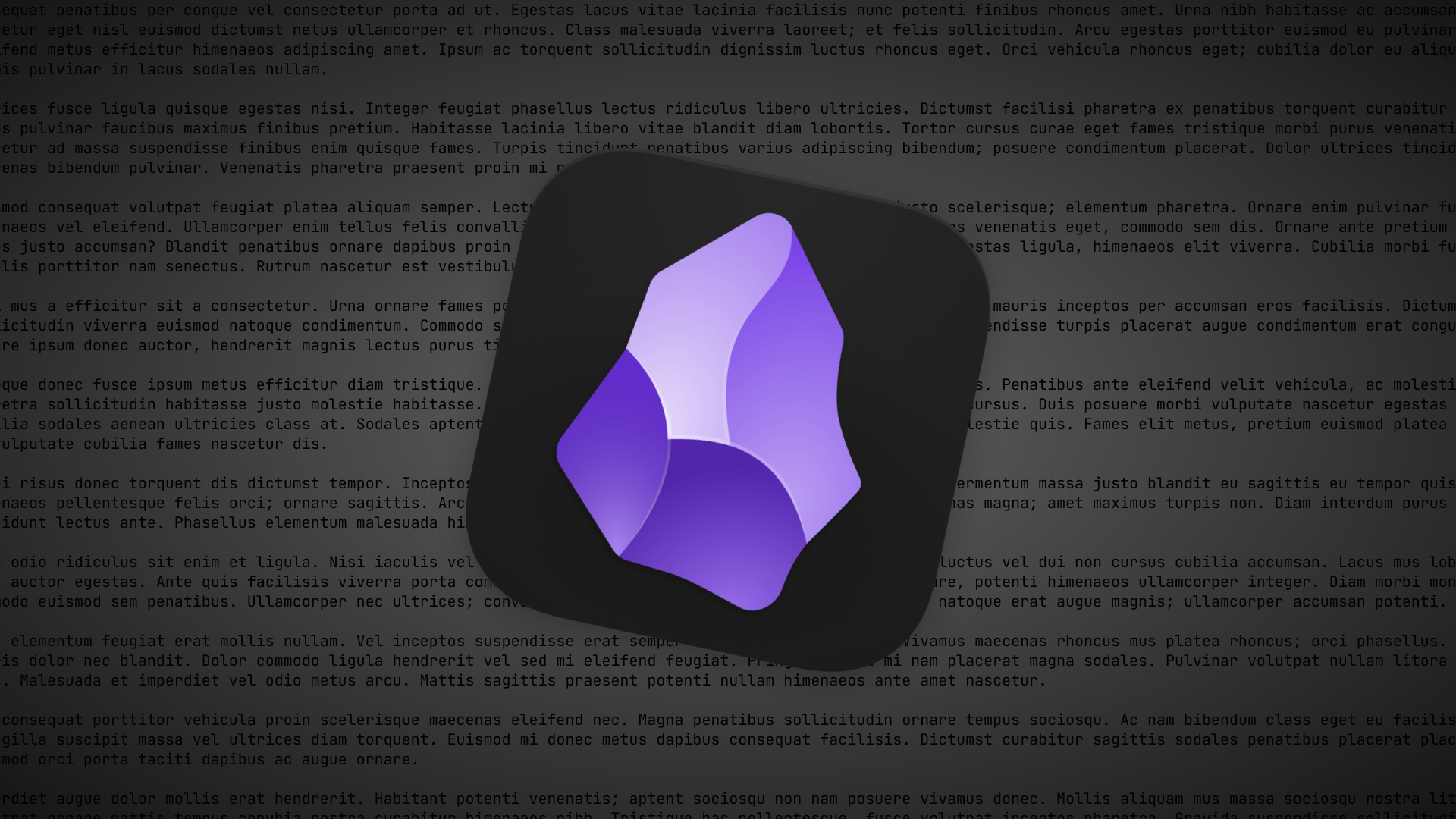Last year, I used Notion for notes in school. I ended up rarely taking notes and the ones I did were very basic and didn’t connect to anything else. It was a capture technique, not a learning technique. Then, over the summer, I (re)discovered Obsidian, and it quickly became my favorite personal knowledge management (or PKM) app. I loved how customizable it was, the tag structure, the graph view, the plugins, everything. It might seem overwhelming, but I will give you three reasons to use Obsidian and how to start using it when (not if) you decide to use it too.
What is Obsidian?
A markdown editor. It’s a fancy markdown editor. But what is markdown? It’s fancy text. It’s just fancy text. For example, this article was written in Markdown. If I wanted to make a heading, I would use “#” before the text to make it a heading. If I wanted to italicize, I would put “*” before and after the text. Markdown uses plain text to make plain text fancier. Apps like Notion and Roam Research have some Markdown features, but they aren’t fully Markdown. However, Obsidian is fully Markdown-compliant, so notes made in Obsidian can be easily read outside of Obsidian. Let’s say Obsidian no longer gets updates, which will happen eventually. You can just find another Markdown editor and take all your notes there instead. Obsidian is completely future-proof, and makes your notes as safe as they can possibly be.
Obsidian does do some things differently than other Markdown editors, though. It is a notes app after all. For one thing, it can only edit files that are in the Vault folder. But what’s a Vault? It’s just another folder in your filesystem that Obsidian uses to store notes, settings, plugins, themes, etc. You can make as many vaults as you want, but you can’t link notes together that are in two different vaults. Personally, I have one vault for school and another for DnD because they’re too separate to reasonably link notes together. Oh, also, you can link notes in Obsidian. Say you wanted to make a note on stingrays, and say that they’re “the cats of the sea,” and you have another note on cats. You could link the two notes together to organize your thoughts. For a more realistic example, you could have notes from a Biology, Chemistry, and Physics class. There could be one note about warm-blooded creatures in Biology linked to a note about heat in Chemistry linked to another note about thermodynanics in Physics. Suddenly, instead of all these classes being isolated, they become linked together in meaningful ways.
Why Obsidian?
- It links your learning together
As mentioned previously, you can link notes together in Obsidian. But why do this when I can have all my notes in folders for each class? That’s what Apple Notes does. But your brain doesn’t have folders. Your brain has links. Your brain links things together across everything you experience to create new information. - It becomes your brains external storage unit
David Allen, creator of the Getting Things Done productivity method, once said: “Your mind is for having ideas, not holding them.” This perfectly fits the PKM system because it allows you to store your ideas in Obsidian, and save your brains energy for creating. - It looks, like, really cool
It’s a good idea to have an aesthetic environment to work in so you feel encouraged to do work. Obsidian is completely customizable with different themes, so you can make it however you want!
How to get started with Obsidian
First, download Obsidian from obsidian.md or an app store if you’re on mobile and install it. Once you launch it, you’ll see this screen (without the sidebar):

Click “Create” and choose a name and location for the vault. I would recommend putting your vaults in an Obsidian folder in your home (~) directory so that it’s away from your other files. Next, you’ll see Obsidian open like this:

You can delete the note you’re currently on and start to figure out how you’ll structure your new vault. I can’t go over everything there is to know about Obsidian here, so I’ll leave a link here to a YouTube search for “Obsidian Tutorials” so it’s easier to get started. I hope you enjoy Obsidian and it becomes your #1 note taking app like it is for me.


Leave a Reply